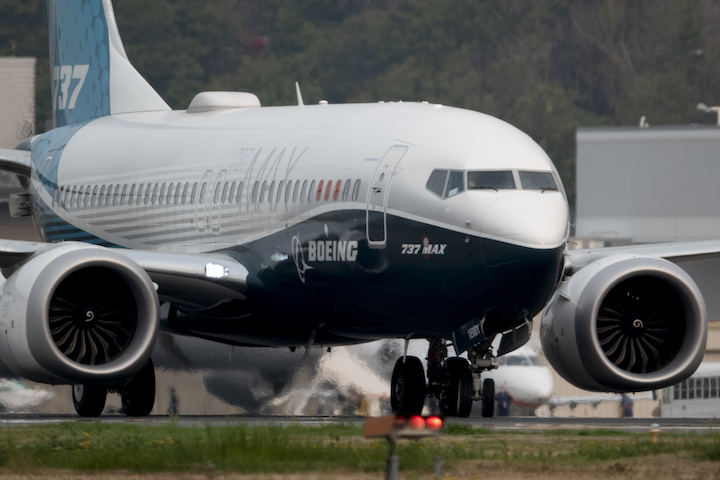US FAA issues first aircraft-specific limit for 5G signals
U.S. aviation regulators published the first aircraft-specific restriction related to new 5G service expected to begin next week, ordering operators of Boeing Co. 787 jets to update landing requirements.
Equipment on the planes that could be subject to interference from 5G radio waves affects how the jet stops after touching down, the Federal Aviation Administration said in an airworthiness directive posted on a government website Friday.
Interference from 5G could result in “degraded deceleration performance and longer landing distance than normal,” the FAA said. The agency is requiring changes to flight manuals and other actions so pilots are aware of the issue.
It’s not clear whether the FAA’s airworthiness directive will dramatically impact flight operations since Boeing can avoid most or all limitations if it can show its equipment is resistant to interference. But the FAA action shows the potential problems that could emerge from the wide range of systems on modern jets vulnerable to the issue.

The frequency of the new wireless service being introduced by AT&T Inc. and Verizon Communications Inc. is located next to radio waves used by so-called radar altimeters and may cause the devices to malfunction, the FAA said in the directive.
The jet’s computers use the altimeter to help determine when it has reached the ground, and that controls multiple functions, including throttles, reverse thrust that helps slow down the aircraft after landing and devices on the wings known as spoilers that improve braking.
“Newer aircraft incorporate radio altimeter data into a variety of safety systems, which underscores the importance of identifying and mitigating unsafe signal interference,” the FAA said in an emailed press release.
As a result, airlines operating the 787 in the U.S. will have to change their assumptions about the runway distance they need to come to a stop and can’t fly when runways are covered in snow or ice, the FAA said. Airlines must perform a calculation showing a plane has adequate stopping distance or a flight can’t depart.
There are 137 of the jets in operation by U.S. carriers out of a worldwide total of 1,010, the FAA said.
The agency has issued almost 1,500 notices restricting aircraft operations as a result of 5G signals, but is working with wireless companies and plane makers to lessen the impacts.
Similar Stories

First JetBlue flights from Manchester, New Hampshire take off today
View Article
Alaska Air Group reports fourth quarter and full year 2024 results
View Article
Cathay Pacific and SITA agree to expand network connectivity across 51 global airports
View Article
American Airlines reports fourth-quarter and full-year 2024 financial results
View Article
ECS Group partners with CargoAi to digitalize manual email quotation processes with their CargoCoPilot API
View Article
Chapman Freeborn restructure to expand European cargo operations
View ArticleGet the most up-to-date trending news!
SubscribeIndustry updates and weekly newsletter direct to your inbox!





